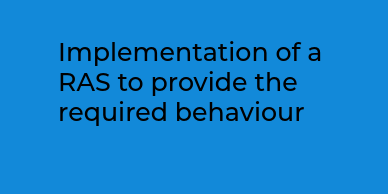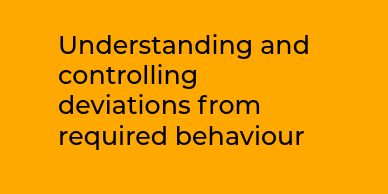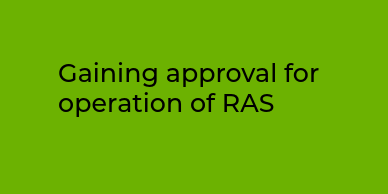Body of Knowledge
Direct links to practical guidance
1.1 Identifying hazards
1.1 - practical guidance for 'identifying hazards':
- healthcare
1.1.2 Defining the operating environment
1.1.2 - practical guidance for 'defining the operating environment':
1.1.3 Defining operating scenarios
1.1.3 - practical guidance for 'defining operating scenarios':
1.2 Identifying hazardous system behaviour
1.2 - practical guidance for 'identifying hazardous system behaviour':
- automotive
- cross-domain
- healthcare
1.2.1 Considering human/machine interactions
1.2.1 - practical guidance for 'considering human/machine interactions':
- social care
- automotive (TIGARS project)
- cobots (collaborative robots)
- manufacturing
- automotive (Safe-SCAD project)
- healthcare (SAM project)
- healthcare (human factors in AI project)
- aviation (WIZARD project)
1.3.1 Validation of safety requirements
1.4 Impact of security on safety
1.4 - practical guidance for 'impact of security on safety':
2.1 System-level verification
2.1 - practical guidance for 'system-level verification':
2.2.1.1 Defining sensing requirements
2.2.1.1 - practical guidance for 'defining sensing requirements':
2.2.1.2 Defining understanding requirements
2.2.1.2 - practical guidance for 'defining understanding requirements':
- cross-domain and maritime
- cross-domain
- space
2.2.4.1 Verification of sensing requirements
2.2.4.1 - practical guidance for 'verification of sensing requirements':
2.2.4.2 Verification of understanding requirements
2.2.4.2 - practical guidance for 'verification of understanding requirements':
- cross-domain and maritime
2.2.4.3 Verification of deciding requirements
2.2.4.3 - practical guidance for 'verification of deciding requirements':
2.3 Implementing requirements using ML
2.3 - practical guidance for 'implementing requirements using ML':
2.3.1 Sufficiency of training data
2.3.1 - practical guidance for 'sufficiency of training data':
2.3.2 Sufficiency of the learning process
2.3.2 - practical guidance for 'sufficiency of the learning process':
2.3.3 Verification of the learned model
2.3.3 - practical guidance for 'verification of the learned model':
- cross-domain (AAIP guidance)
- cross-domain and automotive (TIGARS project)
- cross-domain (Safe-SCAD project)
2.4 Controlling interactions with other systems
2.4 - practical guidance for 'Controlling interactions with other systems':
- Cross-domain guidance on assurance objective: Identify how interactions between the RAS and other systems may give rise to unsafe behaviour.
- Cross-domain guidance on assurance objective: Manage interactions between the RAS and other systems to ensure they do not result in unsafe behaviour.
2.6 Handling change during operation
2.6 - practical guidance for 'handling change during operation':
2.6.1 Monitoring RAS operation
2.6.1 - practical guidance for 'monitoring RAS operation':
2.7 Using simulation
2.7 - practical guidance for 'using simulation':
2.8 Explainability
2.8 - practical guidance on:
- interpretability techniques for 'explainability' (cross-domain)
- interpretability requirements for 'explainability' (cross-domain)
- interpretability evaluation for 'explainability' (cross-domain)
- automotive
- human-centred explainability (healthcare)
3 Understanding and controlling deviations from required behaviour
3.0 - practical guidance on 'understanding and controlling deviations from required behaviour':
3.1 Identifying potential deviation from required behaviour
3.1 practical guidance for 'identifying potential deviations from required behaviour':
- cross-domain
3.1.1 Identifying potential deviation from required behaviour
3.1.1 practical guidance for 'identifying sensing deviations':
3.2 Mitigating potential deviations
3.2 practical guidance for 'mitigating potential deviations':
4.1.1 Identifying applicable rules and regulations
4.1.1 - practical guidance for 'identifying applicable rules and regulations':
4.1.2 Understanding the requirements of rules and regulations
4.1.2 - practical guidance for 'understanding the requirements of rules and regulations':
About you
Please enter your details below to help us understand the types of job roles and organisations who use this practical guidance. You can view our privacy statement here.
Downloads:
- Body of Knowledge structure (PDF
 , 14kb) - the full Body of Knowledge structure (July 2019)
, 14kb) - the full Body of Knowledge structure (July 2019) - Body of Knowledge scope and structure April 2019 (PDF
 , 2,031kb) - a document outlining the scope of the Body of Knowledge and information about each section
, 2,031kb) - a document outlining the scope of the Body of Knowledge and information about each section - Body of Knowledge - an Introduction (PDF
 , 1,137kb) - an earlier introduction to the Body of Knowledge (June 2018)
, 1,137kb) - an earlier introduction to the Body of Knowledge (June 2018) - You may also find our list of definitions used in the Body of Knowledge useful

.png)


